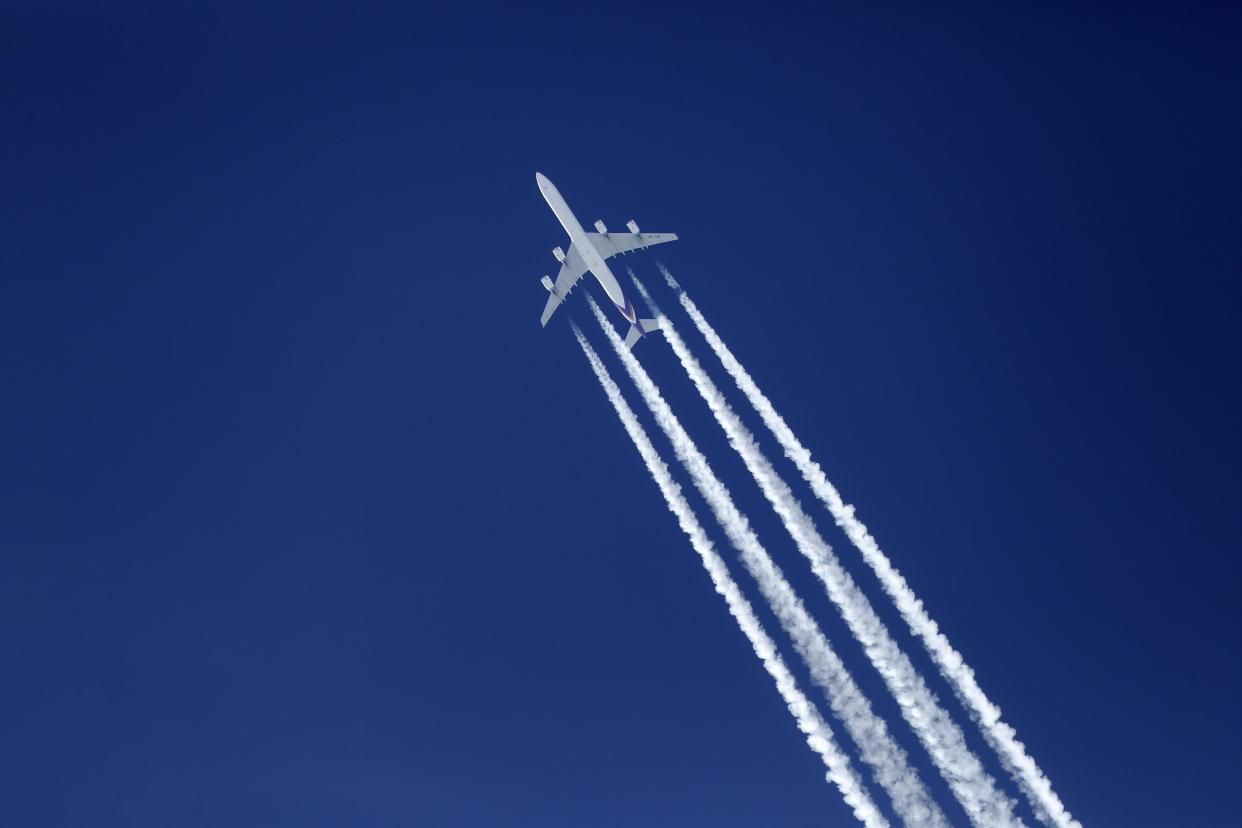CrowdStrike chaos leads to grounded aircraft — and maybe an unusual weather effect

Air traffic for many airlines ground to a halt after a buggy update from CrowdStrike took down Windows computers around the world. At the time of publication, nearly 3,500 flights have been canceled worldwide, according to FlightAware.
While the IT outage is causing headaches for travelers, it may also have an unexpected effect on the climate: clearer skies and maybe lower temperatures this evening, according to David Travis, a scientist who has performed pioneering research on how jets can affect the weather. The effect won’t be pronounced or long lasting, but it does highlight how aviation can affect the climate in unexpected ways. And how technology — in this case, a software update — can start the ripple.
Planes flying at high altitudes frequently leave contrails, the billowy streaks created when jet engines dump water vapor and pollution into the atmosphere. While the traces quickly disperse, they leave wispy traces that resemble high-altitude cirrus clouds. Such clouds reflect sunlight back into space in the daytime, but they can also trap the Earth’s heat in the lower atmosphere.
On balance, contrails tend to heat the Earth more than they cool it, causing an additional 1% to 2% more global warming. (Though carbon dioxide and methane are the most widely cited greenhouse gases, water vapor also warms the atmosphere.)
The effect is so pronounced that Breakthrough Energy, the organization founded by Bill Gates, has a working group that’s seeking to address the problem. In May, the group announced a partnership with ForeFlight, an aviation app startup acquired by Boeing in 2019, to recommend flight paths that minimize the chance of contrail formation. Google also partnered with Breakthrough Energy, turning its AI models on past data in an attempt to predict conditions that would lead to more contrails. American Airlines tested the models over the course of 70 flights, which resulted in 54% fewer contrails, according to Google.
Much of our understanding of contrails’ climate impacts comes from a pioneering study performed in the wake of the 9/11 tragedy. At the time, Travis was a professor at the University of Wisconsin-Whitewater studying the effects of contrails. He had trouble drawing firm conclusions because there was no easy way to see how clouds would behave without airplanes. Since the dawn of the jet age, there hadn’t been a single day without a plane in the sky.
The events of 9/11 changed that. For three days, commercial air travel over the contiguous United States was halted. Travis, like many of us, spent the first day stunned by the events. But toward the end of September 12, when he was driving home from work, he noticed something peculiar.
“In the afternoon, I thought, ‘Wow, it’s still so clear out,’” Travis told TechCrunch. “Then I thought, wait a second: of course, there are no contrails.”
Travis and a pair of other scientists collected atmospheric data covering nearly 72 hours of jet-free skies over the lower 48 United States. The results were a striking time capsule of what atmospheric and climatic conditions probably looked like before the jet age. Without fewer high-altitude clouds, the spread between daytime high and nighttime low temperatures grew by about 1 degree C (about 2 degrees F). Days during the grounding were a little bit warmer than before and after; nights were a little bit cooler.
Since then, researchers have developed a much deeper understanding of contrails and their effect on the climate. “We have so much more data now than we did 20 years ago that we can see spaces where we think if an airplane flies through that it’s going to produce a contrail that will not only persist, but will likely spread and criss cross and can create a lot of cloud cover,” said Travis, who is now president of Lake Superior State University.
That data is now being used to inform projects like the partnership between Breakthrough Energy and ForeFlight.
While the cancellations that have resulted from the CrowdStrike bug are unlikely to match those following 9/11, they’re still significant enough that we could see some effects.
“We might see some slight reduction in high clouds, and that would create a slight increase in the temperature range between day and night over today and tonight maybe,” Travis said, “depending on how long this lasts.”

